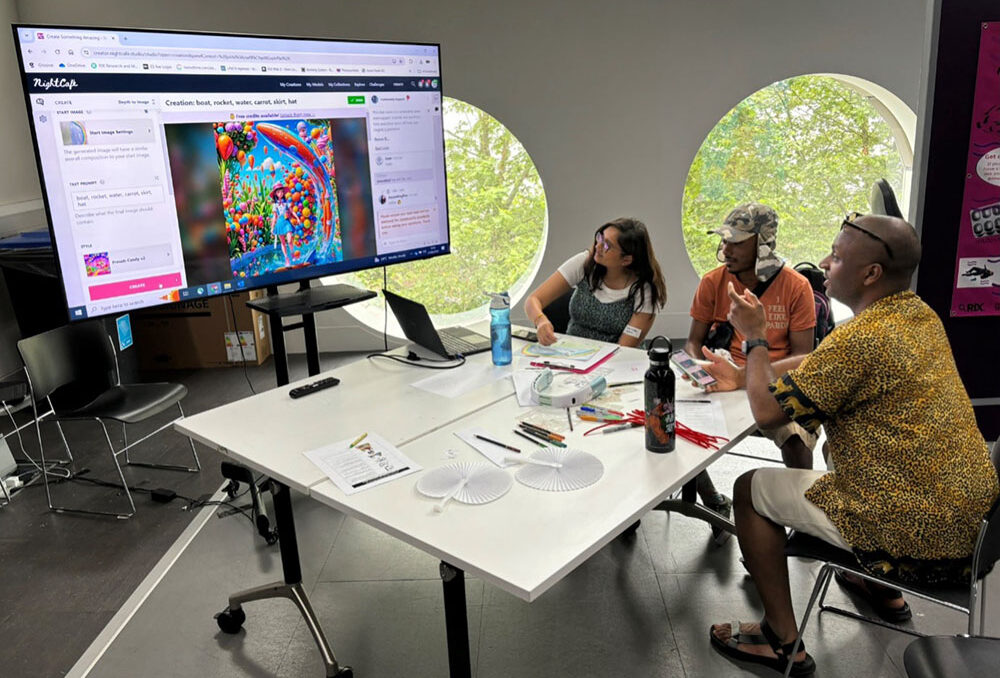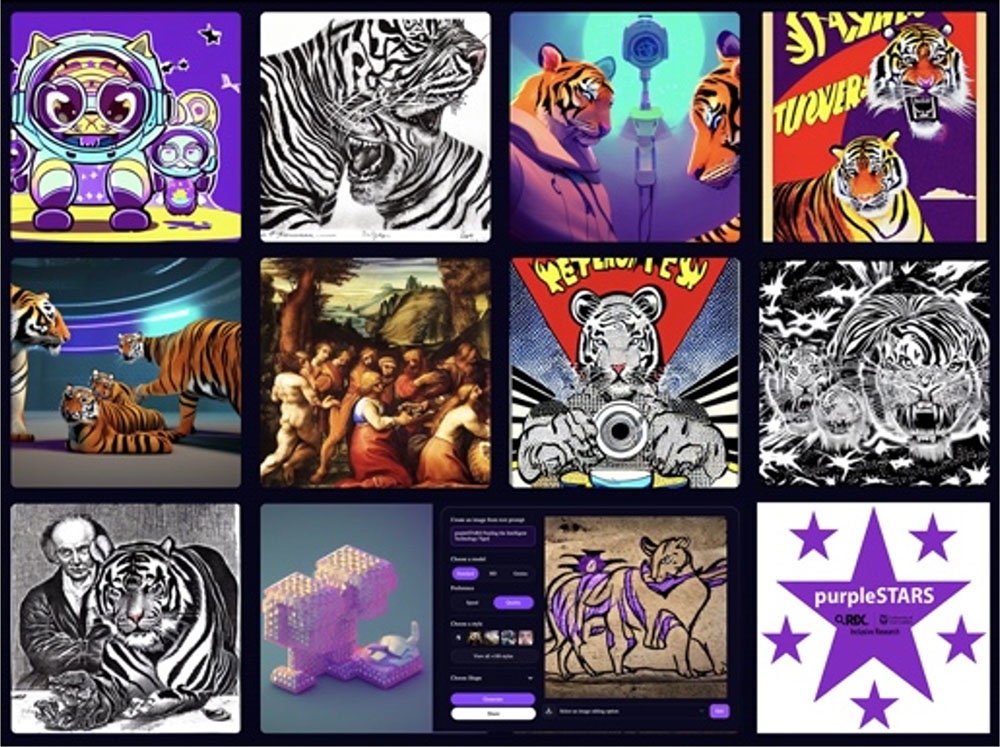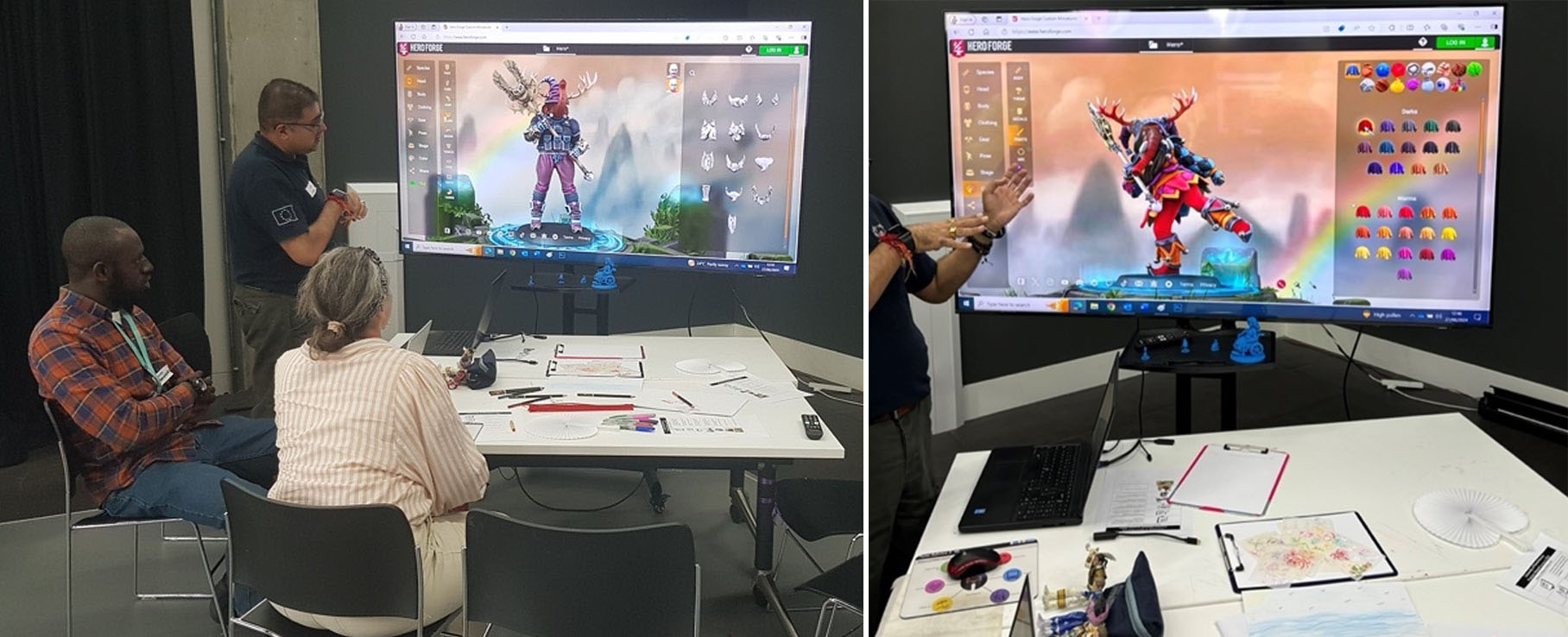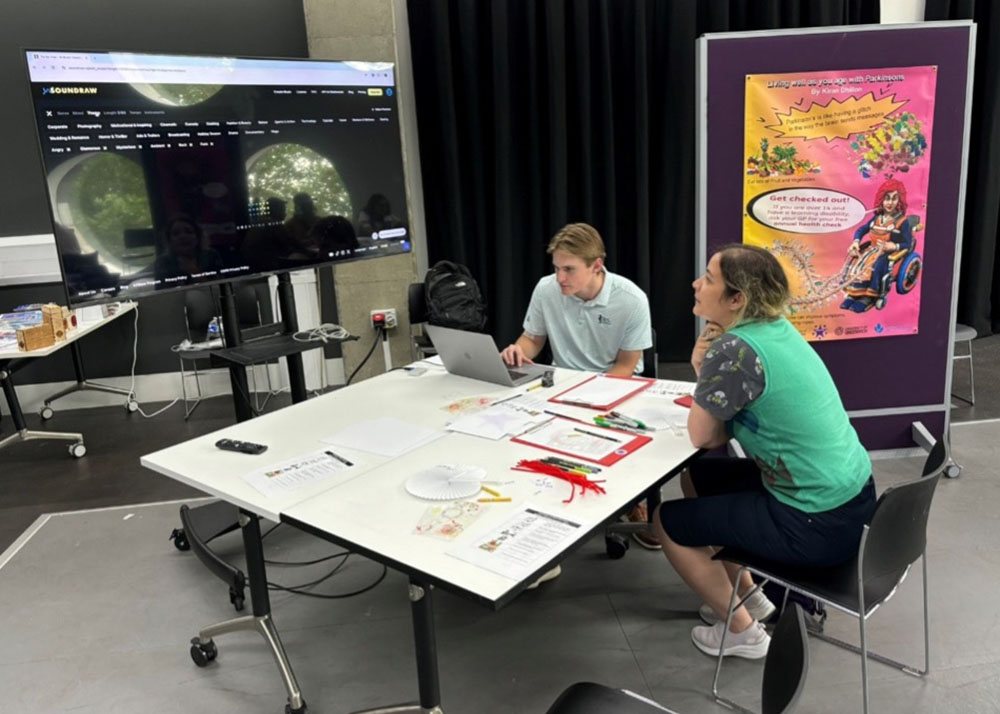Creative inclusive research explorations of intelligent technologies/Artificial Intelligence (AI) at the University of Ravensbourne MeCCSA Symposium
Rix inclusive researchers and purpleSTARS – Ridwan Aboubakari, Kate Allen, Rufaro Asuquo, Ajay Choksi, Nic Hollinworth, Kanchan Kerai, Lee Phillips, Charles Stewart
The uncharted terrain of creativity in the age of AI

Kate’s reflections
360 video of our inclusive research workshop exploring AI software
We proposed a collaborative experimental workshop for Ravensbourne University London’s Intelligent Technology Symposium.
For people with lived experience of learning differences and disabilities, gaining access, being consulted, and contributing to research exploring the development and impact of AI at this early stage is rare and an important opportunity for us.
AI is still so new and we are all learning how to use it, and feeling nervous about its future impact.
We discussed how essential it is for diverse people to engage in feeding the algorithm – the algorithm is the name of a list of rules for the AI to follow in order to complete a task or solve a problem. The AI is learning all the time from everyone’s interactions with it. It is important that we research the impacts, both negative and positive, for people with leaning differences and disabilities.
Our workshop structure was inspired by a lifedrawing room, but instead of easels, we had screens surrounding a 360 camera. As inclusive researchers we have embraced this 360 technology which means no one is behind the camera, we are all included in the image, and anyone can take the image. Four screens with mixed teams of delegates and purpleSTARS, explored various AI applications including NightCafe, Deep AI, Soundraw, and a gaming 3D modelling application called Hero Forge. We were keen to highlight where technology can empower us, and online modelling has done this by giving many of our team access to creating 3D models which we have developed into posters promoting health issues, and characters for a role play quest at St Fagans Museum of Wales.
The aim of our research workshop was to explore how accessible and easy to use AI software tools are, to see if they would reflect prejudice that can lead to people being unfairly treated or stereotyped. We wanted to start a conversation about how AI could be useful for the learning difference and disability community.
Working with the different applications raised our awareness of how AI may give us the power to design bespoke items for the individual, rather than for ‘people with learning disabilities’, and that these could become affordable to design and produce using AI.
AI sound and images made on the day

At the workshop we started to refer to the prompts we invented to create the AI imagery as Feeding the Algorithm Tiger.
Nic’s Reflections
The AI symposium was designed to give people the opportunity to examine the use of Artificial Intelligence (AI) to generate original artworks and music by supplying what is essentially a predetermined algorithm with new parameters to work with. Each of the four ‘creative stations’ at the event used a different piece of web-based software. Some just needed a description of what was required, whilst others could use uploaded sketches as a base from which to start. The image above illustrates the use of NightCafe and how it can be configured to use preset images, text and styles as starting points – the image shown on the screen was chosen to reflect a fantasy style called candy. However, the AI behind the website can also be used to refine existing work (uploaded scans, photographs, etc), as it can be preset with, for example, specific poses.
Another example was demonstrated by Ajay at the Hero Forge station, where he generated hero characters based upon the choices made by the individual, such as build, length of hair, complexion, etc. This software also enables the user to download the 3D model and print the object with a 3D printer. Perhaps a future version would allow the generation of custom avatars that speak? Anything is possible.

AI applies machine learning techniques in the creation of new data based on patterns which are continually updated. This raises questions regarding the future of creativity, since AI is beginning to transform the landscape of art and music. For instance, who owns the copyright for music generated by the AI algorithm on the website that was being demonstrated by Charlie (see image below)?
It is clear that AI opens up new possibilities that allow artists to generate new styles using software tools, musicians to create unique soundscapes, and almost anyone to experiment with creative expression. AI can be a powerful collaborator, helping overcome creative blocks and pushing boundaries. However, the rise of AI-generated art and music also presents challenges. Can a machine truly capture the essence of human emotion and experience? Will an abundance of AI-created content saturate the market, making it harder for human artists to stand out?
Perhaps the key lies in collaboration, where AI acts as a tool to amplify human creativity, rather than replace it. Ultimately, AI’s impact on art and music will depend on how we choose to use it. Will it become a crutch, or will it be a catalyst for artistic exploration?

MeCCSA Ravensbourne Creative Practice Symposium 2024

